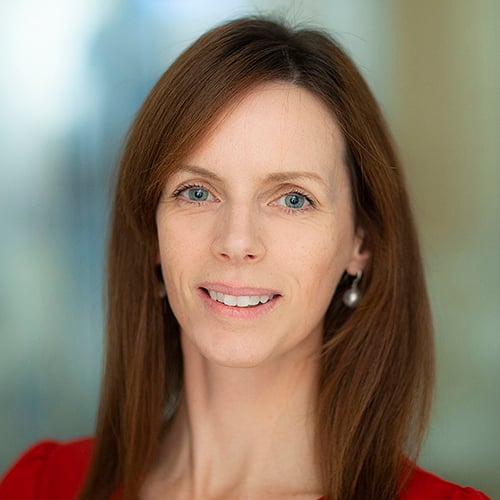The announcement by Bayerische Landesbank (BayernLB) a few days ago that it had completed its debut synthetic securitization that complies with the so-called “simple, transparent and standardized” (STS) criteria of the EU’s Securitization Regulation came at a perfect moment. Because it coincided with a 1-to-1 social media discussion I was having around this topic with a financial institutions group advisory banker at a major European bank.
In BayernLB’s transaction, the Munich-based lender (one of Germany’s largest banks) synthetically transferred the credit exposures of a €1 billion (US$1.03 billion) reference portfolio of performing corporate loans by selling credit-linked notes to investors Chorus Capital and M&G – while keeping the assets on its balance sheet. The bank retained the senior and first-loss tranches but transferred the risk exposure of the deal’s mezzanine tranche.
Synthetic securitization is hardly new, but it seems to have found a new lease of life of late. And it’s catching on. For investors, it’s a great way to generate reasonable and relatively stable returns by creating diversified credit exposure to banks’ performing lending portfolios.
For risk sellers, it serves two key purposes. It’s a hedge against losses on underlying reference portfolios; particularly important at a time of deteriorating economic conditions and recession. Just as importantly, it allows banks to reduce the risk-weighted assets associated with the transfers, which mechanically cuts regulatory capital requirements. BayernLB’s transaction freed up roughly €500m in risk-weighted assets, for example.
And that – regulatory bank capital – was the topic of my social media discussion, which had started in the aftermath of a bank capital conference I’d chaired a few days earlier. My social media interlocutor had decried in a message that the fixation on common equity tier one had gone too far. So, he is calling for a greater mix of fixed-income capital in bank capital requirements. He noted that banks are getting a lot more fixed-income capital through significant risk transfer (SRT).
SRT can be achieved through cash or synthetic securitization. I was told there are around 50 synthetic deals a year these days – forecast to be more this year – averaging €1 billion per deal and that they have led to ballpark €10 billion of capital relief. Not huge in the grand scheme of the European banking sector’s aggregate capital requirements but not insignificant either – and expected to grow.
The market is indeed reported to be growing rapidly in terms of deal volumes, the number of investors playing in this space, and the number of European banks transferring risk from an expanding range of jurisdictions. Deals can be chunky: BNP Paribas’ Resonance synthetic securitization programme has seen huge volumes. For example, Resonance 7, believed to be the largest transaction of this type and completed this summer, was a €13 billion risk transfer of large corporate loans.
BNPP’s first STS-compliant credit risk sharing transaction came earlier this year in an €8 billion agreement with Alecta (the Swedish occupational pension provider) and PGGM (the Dutch pension fund service provider on behalf of PFZW, the pension fund for the Dutch care and welfare sector) to share the risk associated with a wide variety of corporates based in Europe, the US and Asia-Pacific.
There is some transparency around this market. The European Securities and Markets Authority has made available a register of STS securitizations by reporting entities. Meanwhile, STS Verification International, authorized by German regulator BaFin to verify transaction compliance with the relevant articles of the Securitization Regulation, also provides a list of deals that it’s verified and which originators or sponsors have agreed to publish.
Synthetic securitization was pioneered by prime European banks with very big balance sheets in the region’s largest economies. But the market is expanding to smaller and regional banks and to non-core European jurisdictions. I’ve seen estimates that between a third and a half of European Central Bank-supervised banks could eventually choose recourse to synthetic securitization.
Capital costs up and down the capital structure have ballooned as economic conditions have worsened and monetary authorities shifted to quantitative tightening and pushed assertively into a rising interest rate cycle. That has left second-tier banks and banks in peripheral jurisdictions facing a huge increase in fixed-income capital costs and without viable access to the additional tier-1 (AT1) market, as the AT1 bar, even for national champions, has moved into double-digit yields as the market has dramatically repriced throughout 2022.
On the basis also that Basel III finalization will create an additional capital burden on European banks, having recourse to synthetic credit risk transfer could become a vital channel for banks to manage their risk-weighted assets and by extension their capital requirements at reasonable cost.
There’s always a but, however. This comes in the form of potential regulatory headwinds from the European Banking Authority’s proposed Regulatory Technical Standards that market participants say could render the market uneconomic from a capital perspective. But on the basis that European policymakers say they want securitization to flourish to enable banks to continue lending into the real economy, they wouldn’t throw the proverbial baby out with the bathwater, would they?
Perish the thought.









